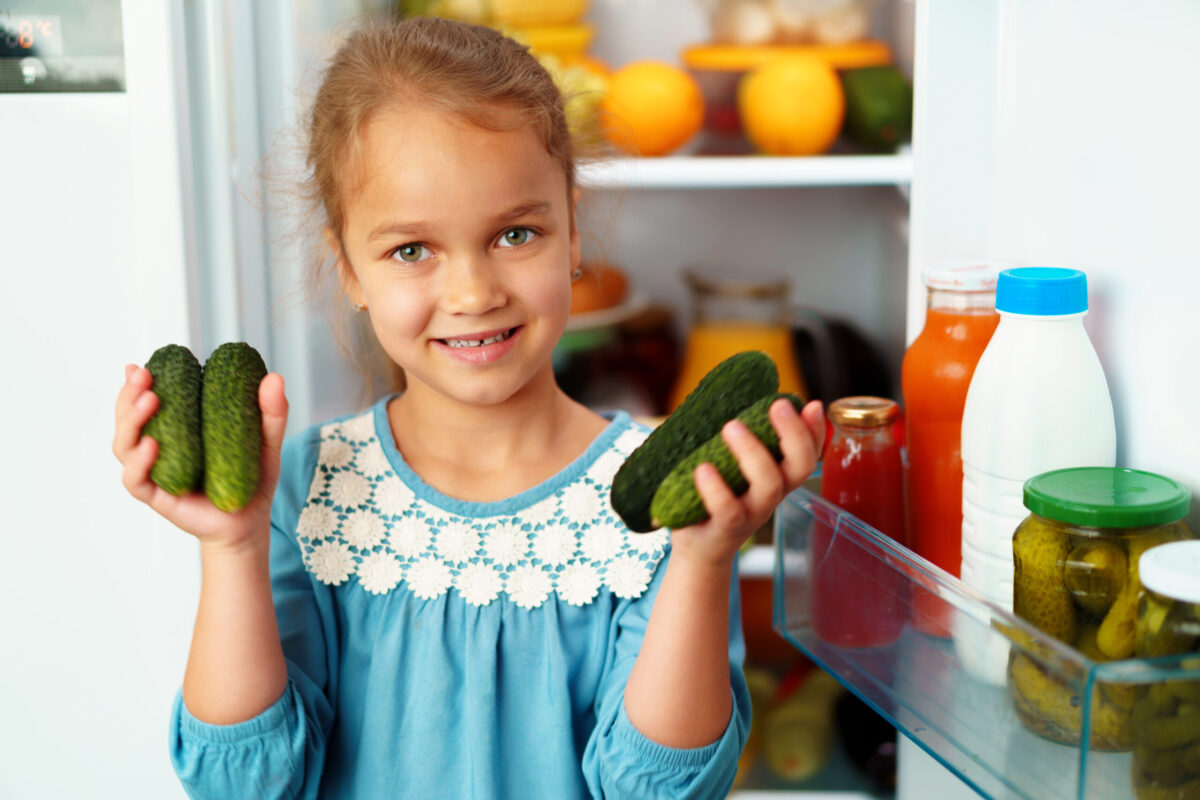Picky eating is common in younger kids. Some studies estimate that 14-50 percent of preschool children and 7-27 percent of older children are considered picky eaters. While the population of picky eaters decreases as kids get older, some children might be less inclined to try new items and eat healthy foods.
As a parent, you can encourage your kids to explore different foods and break out of their picky eater shells. The eating habits you establish with them today can help your kids for the rest of their lives.
There is no magic solution to help picky eaters. Instead, use this guide to learn a variety of tactics you can try at home.
Build New Foods Around Games and Activities
One of the best ways to get your kids excited about eating healthy foods is to add games or activities to mealtime. These can be basic games that you play at the dinner table or activities you set up outside or normal eating hours.
- Involve kids in the cooking process. Show them what an onion looks like before and after it is cooked. Allow them to measure ingredients and smell spices. This taps into their natural curiosity.
- Get into gardening. Along with cooking, you can inspire your kids by growing your own food. If you don’t have a garden, look for community gardens in your neighborhood or nearby library.
- Play “Test the Sauce.” When introducing a new food or vegetable, test which different sauces or toppings would go best with it. For example, you can dip broccoli into ranch dressing, ketchup, and mustard to see which one your kid likes the best. This also makes serving the food easier in the future.
- Designate a “New Food Day.” Set aside one day a week to try something different – something that you and your child can try for the first time. One week, you and your child can try a new type of candy and then test the flavors of eggplant the next.
- Create taste tests. Place a few different foods and sauces on a plate and see how many your child can name. You can even blindfold them for a more challenging game!
As you create new healthy food games, share them with other parents and swap ideas. You can also play these games when your child has friends over, that way they can both eat healthy foods together.
Find Entertaining Shows and YouTube Channels
For today’s kids, YouTube and TikTok are the new TV and video games. In 2020, kids spent an average of 80 minutes per day on TikTok and 85 minutes per day on YouTube. These kids have their favorite channels and hosts that they check in with almost every day.
This screen time can be an asset to parents who are having a hard time getting kids to eat their fruits and veggies. There are dozens of YouTube channels that cater to kids and want to help them eat healthier.
For example, Eats Amazing has more than 10,000 subscribers, which strives to make healthy food fun for kids. Learn how to make tortilla pizza boats or cute grape acorns.
Another good channel is the one created by Amber Kelley, winner of Food Network Star Kids and cookbook author. This sixteen-year-old has more than 47,000 subscribers where she shared some of her favorite healthy recipes.
Even Michelle Obama is creating kid-friendly content to help kids eat right. Her new show, Waffles + Mochi will debut on Netflix in mid-March. She meets residents from the Land of Frozen Food and helps them understand the importance of home cooking.
If your kids don’t want to listen to you, find the right channels and personalities to get them excited and eager to eat well.
Additional Tips to Encourage Kids to Eat Healthy Foods
Even the most creative games and engaging YouTube personalities might not be enough to get kids excited about eating right. If you still have a picky eater at home, try these tips:
- Give them options. Ask whether they would rather eat carrots or cucumber, rather than telling them to eat one.
- Let your kids make their own plates. In the same way that letting your kids dress themselves is exciting, allowing them to build their plates is a step toward independence. You can offer a variety of vegetables and let them choose their favorites on their own.
- Focus on big-picture health. Your child doesn’t need to love onions or crave celery. Make sure they generally eat a variety of foods rather than insisting they eat certain ones.
- Create “gateway foods.” If your child is against trying new things, pair them with foods they already know and like. Adding peanut butter to celery is a great way to showcase the new veggie in a fun way.
- Lead by example. Adding healthy foods to your plate can make your kids curious about them. Plus, it will feel less like a punishment if both of you are cutting out bad food and switching to better options.
Finally, don’t force the food. It’s easy to practice toxic behavior like sending your child to bed without dinner, withholding dessert, or creating other punishments for not eating certain foods. This can create an aversion to any new foods and add stress to your parent-child relationship.
We Prioritize Healthy Eating
At Family Resources, we know that preventing child hunger doesn’t just mean giving kids any available food. It means ensuring kids have access to healthy choices that build up their nutrition and keep them strong. This is why we support the Child Care Food Program, which provides licensed family child care providers with meals each day.
Through the Child Care Food Program, kids are guaranteed at least one healthy meal each day. The Program focuses on providing nutritious meals, but also add diverse ingredients and flavors to help kids eat better. This program prevents future picky eaters and builds healthy habits that last a lifetime.


